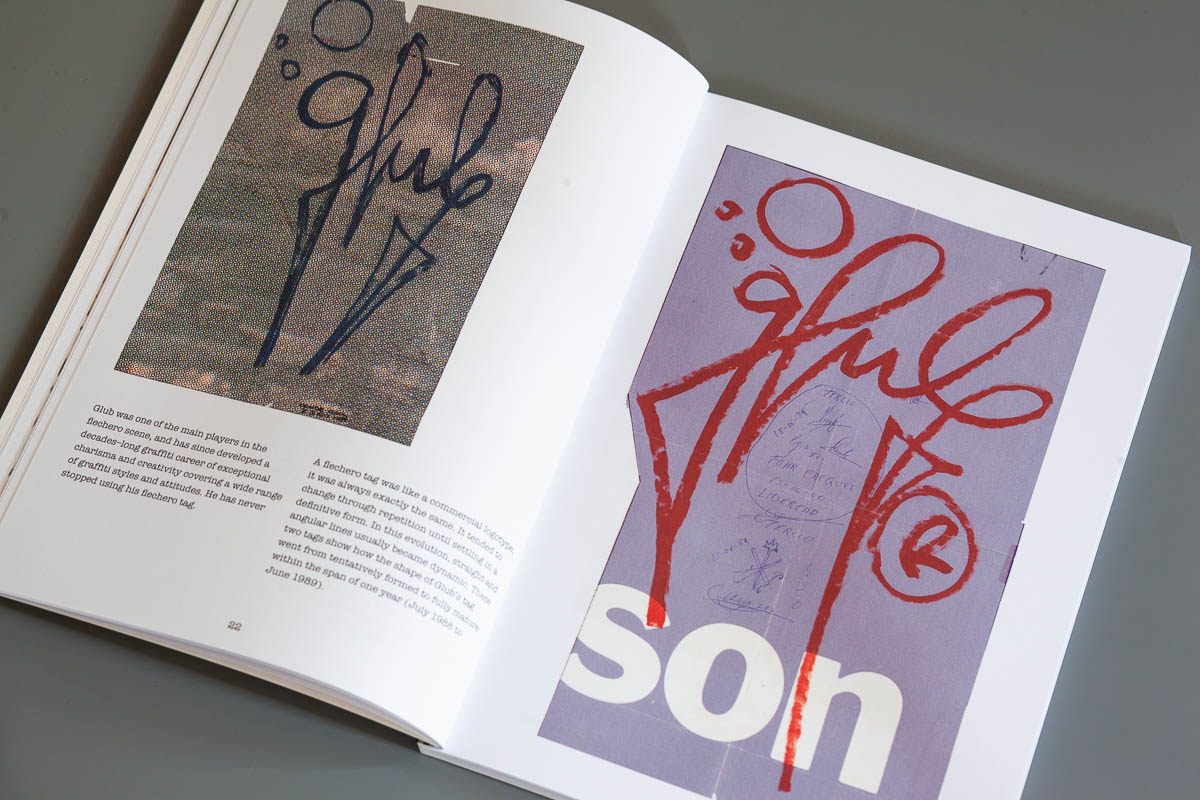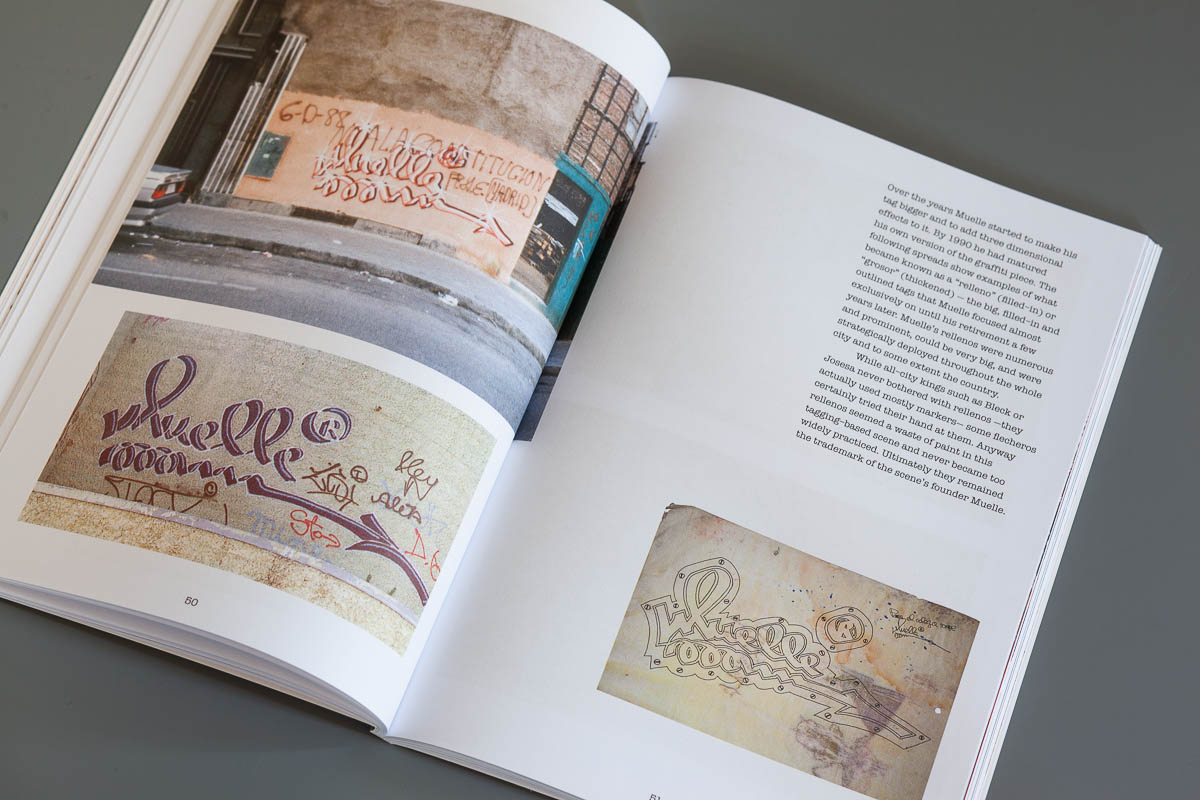Punk Graffiti Archives: Madrid
2018 | 17 × 24 cm | 118 pages
Punk Graffiti Archives: Madrid documents the extremely obscure flechero graffiti scene that took over the streets of Madrid in the second half of the eighties, before the New York graffiti tradition became widespread among the local youth.
Punk Graffiti Archives: Madrid features many unpublished images of ‘flechero’ tags unearthed from private archives, as well as newspaper clippings from the time translated to English. A unique publication that offers graffiti aficionados a rare look into this underexplored culture.
The book was published as a companion to the 2018 Unlock Book Fair, together with its twin volume, Punk Graffiti Archives: The Netherlands. The fair took place in Amsterdam in December 8-9 under the topic “punk and graffiti”.
Punk Graffiti Archives: Madrid
17 × 24 cm
116 pages
English
175 illustrations
Full colour
Paperback
Published by Urbanario, Madrid, 2018
Second edition: 2019
Available here:
Grant Librería – Miguel Servet 21, Madrid. Online and physical bookstore.
Writers Madrid – Luna 19, Madrid. Online and physical bookstore.
Fort van Sjakoo – Jodenbreestraat 24, Amsterdam. Physical and mail-order bookstore.
Hitzerot.com, Berlin. Online bookstore.
From the book’s introduction:
Throughout the decades of 1980 and 1990 the New York tradition of graffiti conquered the whole European continent. But by the early eighties graffiti was nothing new for many urban youth in Europe. Graffiti done by punks was commonplace — slogans, bands’ names and personal nicknames. And punk-originated tagging scenes had developed in some cities with little knowledge of what had been happening in New York.
Two scenes in particular grew to become full-fledged competitions for all-city visibility and reached a notable degree of maturity regarding graphics, methodology and values. One was the Amsterdam scene, started in the late seventies and faded around 1984. The other was the “flechero” graffiti from Madrid, practiced mostly during the second half of the eighties.
Both scenes disappeared when the New York tradition of graffiti became better known through the arrival of books and documentaries. The imported culture was far more complex than the local ones, and in many senses more interesting, so many writers abandoned the local codes and started to explore the game of tags, throw-ups, pieces and trains.













